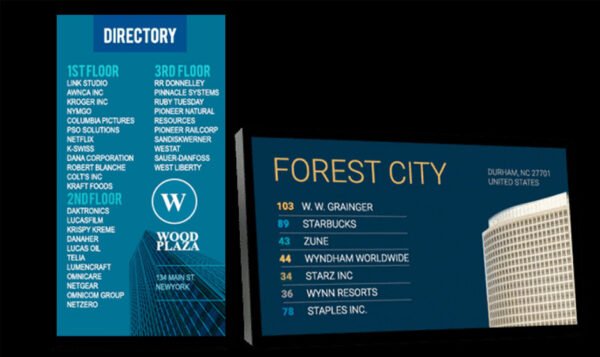Billigste Strømpriser: Selecting the Right Providers

Energy suppliers are now plenty and customers are not just limited to a single provider. Others have better customer service so they can respond faster to outages while some are aiming for little to no downtime as much as possible.
If you’re tired of the skyrocketing bills or you’re feeling overwhelmed with the extra charges, there may be a chance for you to switch providers. Securing the cheapest packages for your contract will result in easy payments each month, and you can easily get into the best plans while not compromising the comfort of the entire family.
Understanding Why People Make the Switch
Electricity providers play a crucial role in determining the cost of your monthly bill, and they are responsible for generating, transmitting, and distributing electricity to your home or business. Understanding their role will help you make better decisions when it comes to choosing the right company to meet your utility needs. See info about providers on this site here.
There are different types in the market, and some cities are unfortunate enough to rely on a single provider because the market is monopolized. This means that only a certain company has exclusive rights to provide electricity to most consumers in many urban and rural areas. On the other hand, many are now getting access to trusted retailers where the market is becoming more competitive, and the options are diverse.
When it comes to your bill, these major corporations charge for two main components: supply and delivery. The supply portion refers to the actual cost of generating the electricity, while the delivery component covers the costs associated with transmission and distribution infrastructure. It’s essential to understand how these charges are calculated by your provider, but most often, you’ll find them listed separately on your bill so you can see exactly what you’re paying for each month.
Keep in mind that while the rates charged by electricity providers may vary, they don’t necessarily determine how reliable or efficient their service is. It’s always wise to consider other factors such as customer reviews and reputation before making a decision. You can always rely on other people’s experience in a specific neighborhood before deciding to contact these electric companies.
What are the Factors that are Worth Consideration?

Choosing the right electricity provider is an important decision that can have a significant impact on your monthly bills. With so many options available, it’s essential to consider several factors before making your choice.
One of the first things to consider is the pricing structure offered by different providers. Some may offer fixed-rate plans, which provide stability and predictability in your bill. Others may offer variable-rate packages, which fluctuate based on market conditions. You need to learn what they entail and what makes them a good option before signing up for one. There are plenty of examples, tips, and tutorials online from people who are currently signed up on these packages, so you can be better off getting a lot of tips from them.
Another factor to consider is the length of the contract or agreement with the provider. Some contracts are short-term, while others may lock you in for an extended period. Assessing your plans and flexibility needs will help you decide whether a long-term commitment or a shorter-term option works best for you.
It’s also crucial to consider any additional fees or charges that may be associated with different providers. These could include enrollment, cancellation, or even hidden charges buried within their terms and conditions. Reading through these details carefully will ensure that there are no surprises down the line, and you will have the needed budget to go through the process from the first to the final phases.
Customer service and reliability should not be overlooked when choosing an electricity provider. You want a company that has good customer reviews, responds promptly to inquiries or complaints, and has reliable infrastructure to deliver a consistent power supply without frequent disruptions.
Take into account any renewable energy options provided by various providers if environmental sustainability is important to you. Many companies now offer green energy alternatives such as solar or wind power sources as part of their package offerings, and they are going to benefit Mother Earth when you’re using them as alternatives.
Researching the Different Companies in the Market
When it comes to finding the right electricity provider, one of the key steps is researching and comparing different options. With so many providers out there, each offering various packages and deals, taking the time to research can help you find the best fit for your needs and budget.
Start by making a list of potential providers in your area, where you can check their websites or call their customer service lines to gather information about their rates, plans, and any additional fees. Look for reviews online from other customers to get an idea of their overall reputation.
Compare the packages offered by each provider, and consider factors such as pricing structure, which is often in the form of fixed or variable, cheaper rates or billig strøm, contract length, renewable energy options, and customer rewards programs. Pay attention to any hidden costs or fees that may not be immediately apparent.
It’s also important to take into account your energy usage patterns when comparing packages. Some providers offer plans tailored specifically for high-energy users or those who use more electricity during certain times of the day. You might also want to see if you need to determine if you have power-hungry devices in your home where you need to make adjustments accordingly.
Negotiating for a Better Deal
Looking for opportunities where you can lower the amount that you’re paying can be an effective way to save money on your monthly bill. Before you pick up the phone, it’s important to do some research and preparation to give yourself the best chance of success, and best of all, you’re already aware of what you’re looking for in the first place.
Start by understanding what other providers are offering in terms of packages and pricing, because this will give you leverage when negotiating with your current provider. Armed with this information, reach out to them and express your desire for a better deal. Be polite but firm in stating that you are considering switching if they cannot offer you a more competitive package.
If they seem hesitant or unresponsive, don’t be afraid to ask for additional incentives such as free upgrades or waivers of certain fees. Remember, the goal is to create a win-win situation where both parties benefit.
When negotiating, it’s important to have alternatives ready in case your current provider refuses to budge on their pricing or offers that aren’t satisfactory. Explore other options available in the market before making any final decisions.
Remember that patience is essential during negotiations. It may take several conversations before reaching an agreement that satisfies both parties. Stay persistent and keep exploring different angles until you find a solution that works best for you.
Government Resources and Assistance Can Be Helpful
Navigating your way through the deals, tax benefits of using solar panels, and getting discounted rates with specific government programs can be a good way to start when you’re trying to install electricity. Some accredited agencies often provide unbiased information to help consumers make informed choices.
One resource to consider is your state’s public utility commission or energy regulatory agency. These organizations oversee the operations of utility companies in your area and can provide useful data on rates, customer complaints, and reliability of different providers. They may also have online tools that allow you to compare prices and packages from various electricity suppliers.
Another government resource to explore is the Department of Energy’s website. Here, you can find tips on how to save energy, understand your energy bill, and even search for available rebates or incentives for upgrading to more efficient appliances or installing renewable energy systems.
Local municipalities may also offer programs aimed at helping residents find affordable electricity options. These programs might include bulk purchasing arrangements where multiple households join together to negotiate lower rates with a particular supplier.
How to Reduce your Bills?
- Be mindful of your energy usage: One of the simplest ways to reduce your electricity consumption is to be conscious of how you use energy in your home. Make it a habit to turn off lights and appliances when they’re not in use, unplug electronics that are on standby mode, and adjust thermostats to an efficient temperature.
- Invest in energy-efficient appliances: When it’s time to upgrade your appliances, consider investing in those with high Energy Star ratings. These appliances are designed to consume less electricity without compromising their functionality or performance.
- Optimize lighting choices: Switching traditional incandescent bulbs with LED or CFL alternatives can significantly reduce your electricity usage. Not only do these bulbs last longer, but they also require far less energy to provide the same level of illumination.
- Unplug vampire devices: Many electronic devices continue using power even when turned off if they remain plugged into an outlet—a phenomenon known as vampire power drain. To combat this sneaky expense, make sure to unplug chargers, gaming consoles, and other devices that aren’t actively being used.
- Sunlight can help: During the daytime, open all of your windows and make sure that your rooms feel light and airy. It’s going to reduce the need for bulbs and make sure to remove the blinds and curtains.
- Conduct regular maintenance checks: Regularly maintaining HVAC systems ensures optimal efficiency while preventing unnecessary energy waste caused by clogged filters or faulty components.
- Try alternative cooling methods: On particularly hot days, explore alternative cooling methods like shading windows with blinds or awnings, using ceiling fans instead of air conditioning units (or pairing them together), and minimizing heat sources inside your home.



